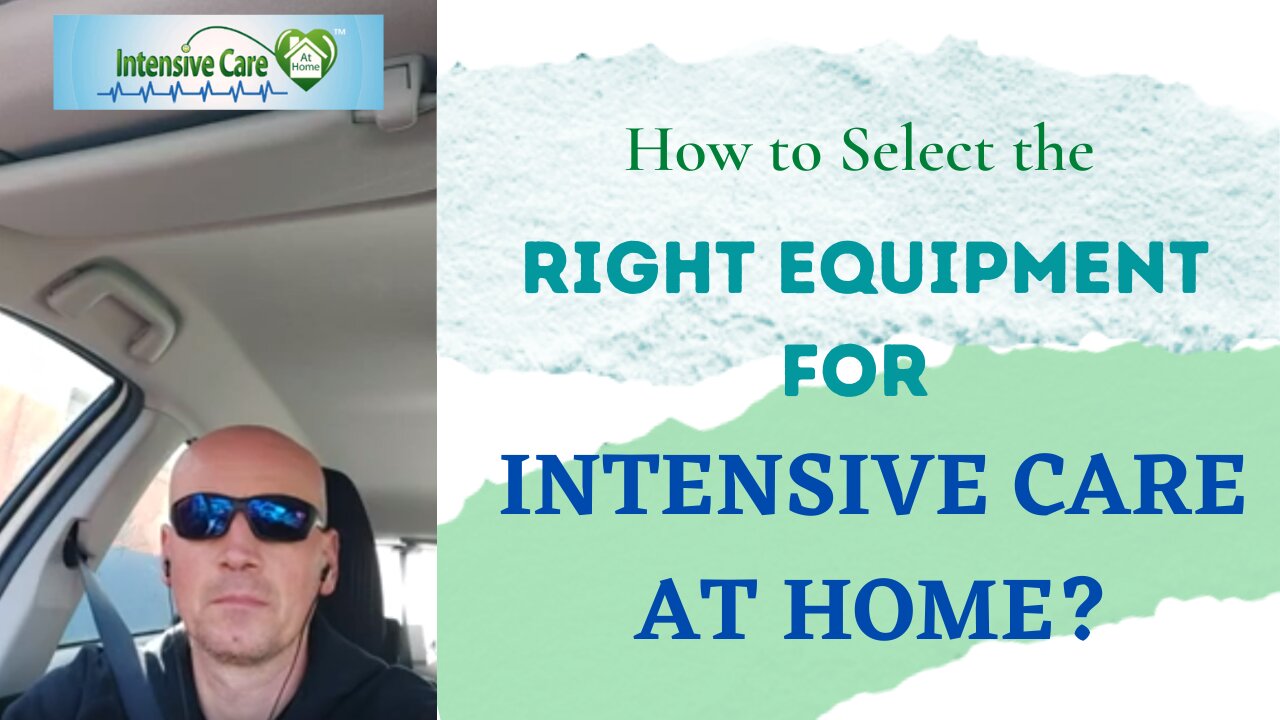Premium Only Content

How to Select the Right Equipment for Intensive Care at Home?
https://intensivecareathome.com/how-to-select-the-right-equipment-for-intensive-care-at-home/
How to Select the Right Equipment for Intensive Care at Home?
Book your free 15 minute phone consultation here
http://intensivecarehotline.com/scheduling-appointment/
Call directly 24/7
+1 415-915-0090 USA/Canada
+44 118 324 3018 UK
+6141 094 2230 Australia
Email support@intensivecarehotline.com
Get 1:1 consulting and advocacy
1:1 phone counselling
http://intensivecarehotline.com/one-on-one-counselling/
Become a member for families of critically ill Patients in Intensive Care
https://intensivecarehotline.com/intensivecaresupport-org-membership/
Immediate action steps http://intensivecarehotline.com/take-control-take-charge/immediate-action-steps/
https://intensivecareathome.com
And if you need a medical record review, click on the link and we can help you with reviewing your loved one’s medical records while they’re in ICU.
https://intensivecarehotline.thrivecart.com/review-of-medical-records/
Hi, it’s Patrik Hutzel from intensivecareathome.com, where we provide tailor-made solutions for long-term ventilated adults and children with tracheostomies and otherwise ventilator-dependent clients on BiPAP, CPAP, VPAP and also on home TPN. And also if clients are at home just with a tracheostomy without ventilation. We are sending intensive care nurses into the home 24-hours a day.
So, my quick tip for today is really about that the devil is in the detail when it comes to setting up equipment at home for ventilator-dependent clients.
So, yesterday we were actually starting with a new client who is BiPAP- dependent, 24 hours a day. And it turned out that the hospital had sent him home without a proper humidifier. And again, the devil is in the detail and hospitals often think they can cut the corner or that they can send clients home with subpar equipment.
And obviously we are the experts on when it comes to Intensive Care at Home, when it comes to ventilation at home, tracheostomy at home, Home TPN and so forth. And we’ve pretty quickly picked up that the humidifier is an old one and it doesn’t really meet the client’s needs because the air that he’s inhaling is simply too cold. And that also causes the client discomfort.
And our next step is to organize an appropriate humidifier, probably a Fisher and Paykel, like an MR850 or the latest model that’s come out of after that. But something that can really titrate to the needs of a client, which is if they’re non-invasively ventilated, temperature usually needs to be set around 31, 32 degrees Celsius. And if someone is invasively ventilated it should be set at 37 degrees.
But really, again, the devil is in the detail. And that’s where we can help you with, it’s not only about equipment selection. It’s making sure that before your loved one is going home, that you’ve got a roster in place, that it’s safe for your loved one to stay at home, that they’re not bouncing back to ICU. That’s our whole purpose and it should be your whole purpose too, to have home care predictably so that your loved one is not bouncing back into ICU all the time.
So that is my quick tip for today about equipment. Make sure it’s all set up properly. Also, you need things like a saturation monitor and oximeter. Again, none of that was given by the hospital. Again, we are able to organize all of that. Of course, it’s part of our area of expertise, but it really needs to be that all the boxes need to be ticked before someone is going home, that it’s safe and sustainable.
You don’t want to keep bouncing back to ICU and you certainly want to have the right staff at home. ICU nurses, according to the mechanical home ventilation guidelines that are evidence-based, only ICU nurses with a minimum of two years ICU experience can safely look after someone at home on a ventilator with a tracheostomy. Even if clients are not ventilated and have a tracheostomy, they still need an intensive care nurse 24 hours a day. Again, if you look at our mechanical home ventilation guidelines on our website that are evidence-based, you will see all of that.
That’s my quick tip for today.
If you have a loved one in intensive care, and you want to go home because they are ventilated, and have a tracheostomy or a BiPAP or CPAP-dependent, you should check out intensivecareathome.com. You can call us on one of the numbers on the top of our website.
If you’re in Australia, we are NDIS (National Disability Insurance Scheme), TAC (Transport Accident Commission), iCare, DVA (Department of Veteran Affairs) approved community service provider. We are currently serving all major metropolitan areas in Australia, but predominantly Melbourne, Sydney, and Brisbane, but also Adelaide and Perth. You should absolutely contact us.
Continue reading at: https://intensivecareathome.com/how-to-select-the-right-equipment-for-intensive-care-at-home/
-
 14:51
14:51
Intensive Care at Home
13 days agoEducation & Care Gaps in Tracheostomy Management: A Multi-Stakeholder Survey - Conclusions
101 -
 LIVE
LIVE
SpartakusLIVE
3 hours agoSpartakus Sunday SOLOS to end your weekend with UNCONTROLLABLE HYPE
497 watching -
 LIVE
LIVE
Due Dissidence
10 hours agoTucker and Fuentes TRADE BLOWS in MAGA Civil War, Burr TRIGGERS Shapiro, Huckabee Visits GHF Site
1,442 watching -
 LIVE
LIVE
GritsGG
7 hours agoWin Streaking All Day! Most Wins 3230+ 🧠
774 watching -
 2:57:17
2:57:17
Barry Cunningham
1 day agoMUST SEE: 10 REASONS WHY IT'S TIME FOR PRESIDENT TRUMP TO DROP THE HAMMER! ( AND MORE NEWS)
63.3K84 -
 LIVE
LIVE
Mally_Mouse
4 hours agoSpicy *Sunday*!! - Let's Play!
145 watching -
 49:57
49:57
Sarah Westall
4 hours agoScience behind Social Revolutions, the Media, Beatles, Aliens and more w/ Mark Brake
26.8K6 -
 LIVE
LIVE
FusedAegisTV
21 hours agoOFFICIAL Evo 2025 Day 3 Co-Stream - Las Vegas, NV ∥ Top 8 FINALS! SF6, Tekken 8 & MORE
377 watching -
 1:09:08
1:09:08
Jeff Ahern
6 hours ago $5.91 earnedThe Sunday show!
36.6K15 -
 LIVE
LIVE
megimu32
1 hour agoOFF THE SUBJECT: Rock Band Night! Let’s Shred & Hang!
52 watching